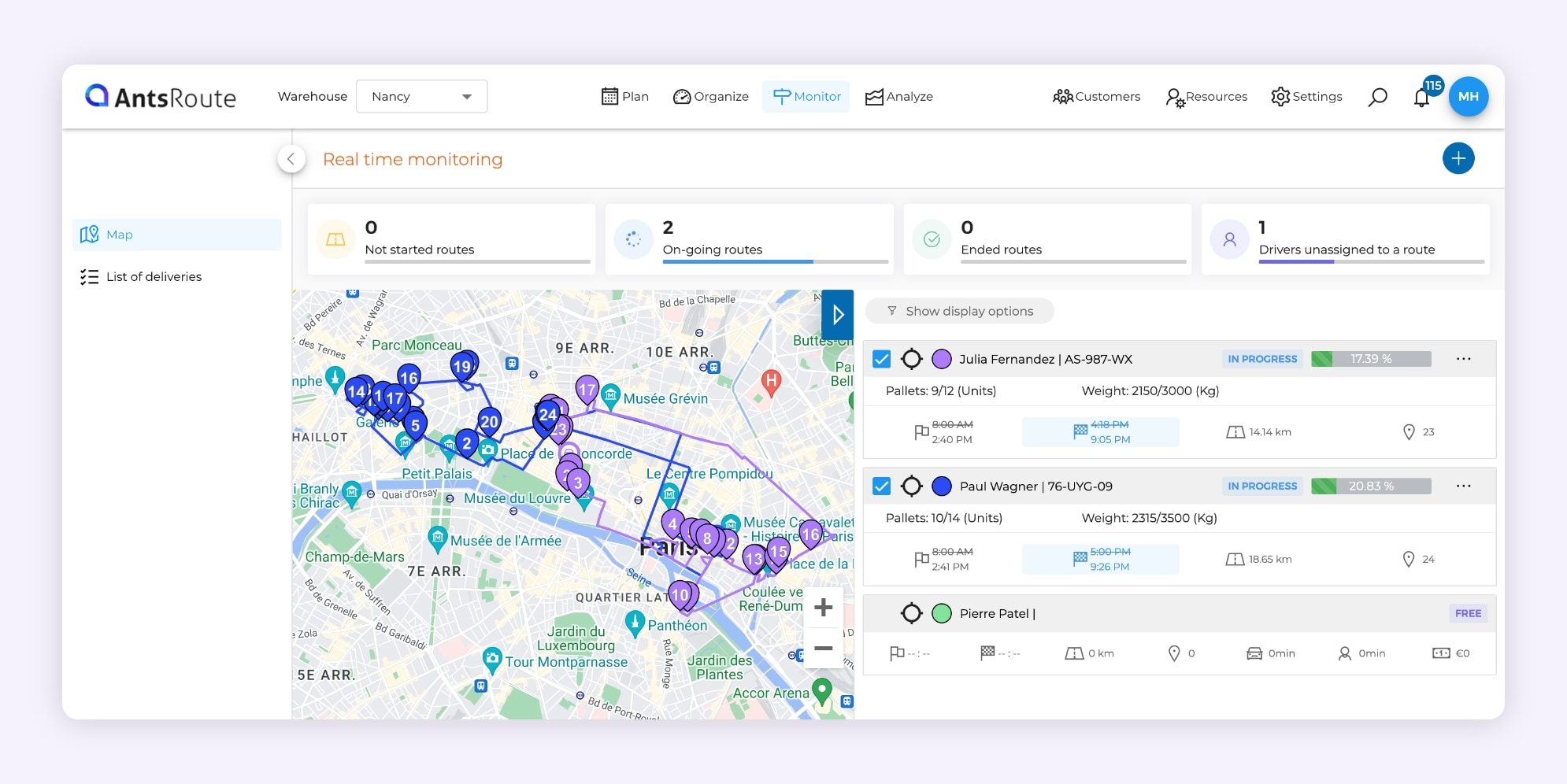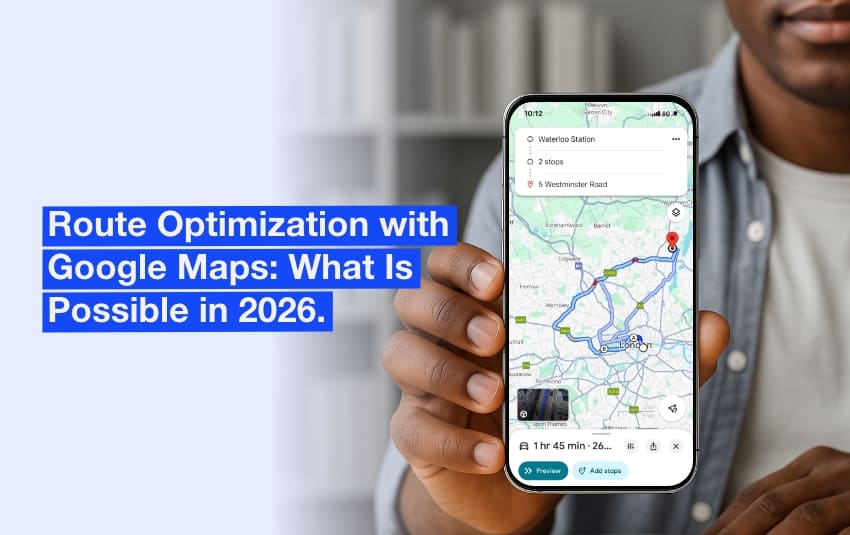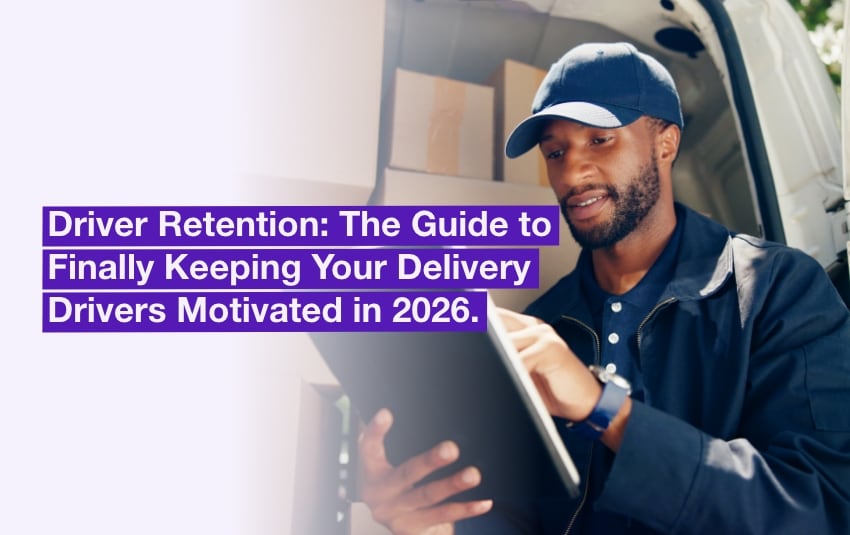Freight Exchanges to Boost your Local Transport Operations

Faced with a decrease in demand for transport, you need to complete the routes of your vans or HGVs. You want to find new loads or limit your empty shipments, but without going to the other end of France or Europe. Have you thought about the freight exchanges? More and more of them are offering local transport.
To help you do this, we have included in this article:
- How Freight Exchanges work in 4 key steps
- 5 tips for finding local freight transport offers
- 3 of the best Freight Exchanges in the UK
- 1 key tool for optimising your routes using a Freight Exchange
The freight exchange enables hauliers to complete their routes. By optimising the load rate of vans and HGVs, empty runs are limited. The profitability of local transport companies increases without any additional effort.
But let’s start by defining what we’re talking about and what it’s for.
What is a Freight Exchange?
A freight exchange is your virtual marketplace for finding goods to be transported or for offering your transport services. They can include several modes of transportation. But most of them only offer road transport solutions. Goods are shipped by light vehicle or heavy goods vehicle, nationally or internationally.
Imagine an online service where you can quickly identify transport needs in your area. With just a few clicks, you can complete your loads or prevent your vehicles from running empty. On these platforms, you can see in real time who needs to send what and where. You can choose transport offers that match your usual itineraries or explore new opportunities. You decide. No need to spend hours on the phone or wait for replies to your emails. It’s all there, clear and simple.
If you are a carrier, you benefit from a number of advantages:
- You reduce your empty runs.
- You optimise the use of your vehicles (light or heavy goods vehicles) and drivers.
- You spend less time prospecting, making enquiries and doing administrative work.
- You reduce your emissions and your consumption per item transported.
For shippers, freight platforms are also an opportunity: they give them access to a wide range of transport companies in just a few clicks. All they have to do is to describe their freight transport requirements online, and they can reach many transport service providers. These platforms help them to reduce their transport costs and ensure on-time deliveries. Major distributors and freight forwarders such as Leroy Merlin use these platforms on a daily basis to ship their customers’ orders.
In short, freight exchanges make the freight transport market more transparent and efficient. They make it easier for carriers, retailers, manufacturers and shippers to connect with each other and respond quickly to their needs.
How does a Freight Exchange work?
The way it works differs from platform to platform. But the 4 main steps remain the same:
1. Publication of transport requirements
Shippers share their requests on the platform, along with the data they have available: type of goods, volume, weight, delivery address, desired delivery times, etc. This information is immediately available to a vast network of carriers.
2. Registration of carriers
If you are a carrier, you start by registering on the freight exchange of your choice. You then enter information about your company, your fleet, the areas you serve and your expertise (refrigerated transport, transport of dangerous goods, etc.).
3. Selection of transport offers
You filter and choose the offers that match your routes and transport capacities. Some platforms use algorithms to match transport supply and demand.
4. Linking and booking
If you identify an interesting transport offer, you contact the shipper directly to finalise the agreement. On some freight exchanges, this contact is also automated via auction or instant booking systems.
The price of freight varies according to a number of criteria: distance, type of goods, weight and volume, delivery conditions and fluctuations in demand.
In addition, most platforms charge a monthly subscription fee or a commission on transactions. But some freight exchanges are completely free of charge for hauliers.
In addition to price, there are other criteria to consider, such as the security of transactions, the digitisation of transport documents, the volumes transported and geographical coverage.

The Freight Exchange enables you to find goods to be transported and provide transport offers.
How can you find Freight Offers in your area?
To find local road transport offers for your fleet of light commercial vehicles or heavy goods vehicles, here are 5 simple tips:
- Use geographical search filters: most platforms offer advanced filtering options. Take advantage of this to target your freight offers by region, city or even postcode.
- Set up customised alerts: configure notifications to be immediately informed when road transport offers are published in your sector.
- Get in direct contact with local shippers: some platforms make it easier for carriers and shippers to network with each other.
- Check the platforms regularly: even if you have set up alerts, keeping an eye on the road transport exchanges regularly can help you discover last-minute opportunities.
- Take an active part in the community: some platforms offer forums or discussion areas for specific transport needs. Being an active member of these communities increases your visibility and can lead to new freight offers.
By applying these tips, you can maximise your chances of finding road haulage requests in your area. This will reduce your empty runs and optimise the use of your light vehicles, vans or HGVs.

5 tips for finding local road haulage offers for your fleet of light commercial vehicles or heavy goods vehicles.
Which are the best UK Freight Exchanges?
There are many transport exchanges in the United Kingdom and Europe. We have identified 3 that could help you find road freight offers near you.
Haulage Exchange
Haulage Exchange is one of the UK’s largest real-time freight exchange platforms. It connects thousands of courier businesses throughout the United Kingdom, Europe and North America. Haulage Exchange is part of the Transport Exchange Group, one of the leading freight exchange networks in Europe. The platform gives access to 13,000+ daily loads and has been used by over 8,000 businesses since 2000.
Teleroute
Teleroute is a European freight exchange community for road transportation needs for both domestic and international routes. With more than 35 years of experience, it connects carriers and freight forwarders throughout Europe. The platform provides more than 350,000 domestic and international freight offers daily. The cloud-based solution ensures more cost-efficient, secure, and sustainable transportation.
Timocom
Timocom is one of the top freight exchanges in the United Kingdom and Europe. Hauliers can search for cargo space from over 156,000 members across the United Kingdom and Europe. The platform provides up to 1 million international freight offers and cargo spaces available daily for carriers and forwarders. The haulage companies can easily place offers, indicate the qualities of their trucks, and list the departure and arrival locations.

The AntsRoute route optimisation software.
How can you organise your routes using Freight Exchanges?
Freight exchanges are instantaneous meetings of supply and demand. They require fast responses and appropriate organisation. You need to know the state of your resources at any given moment. And you need to be able to reorganise your routes immediately.
Some European freight exchanges offer load tracking or are linked to the TMSs of carriers. But not all transport companies have a Transport Management System or are organised accordingly.
That’s why, as a publisher of route optimisation software, we have developed a relay platform with the French freight exchange Woop. The AntsRoute relay platform allows you to indicate your availability and define transport prices according to criteria such as the geographical area and floor delivered, the weight transported, etc. This relay platform is coordinated with delivery requests from retailers such as Leroy Merlin. When delivery requests are made, their in-house software connects with the Woop platform to find out what transport offers are available. Our relay platform then proposes bids in real time based on the data you have entered. If the bid is accepted, the delivery of the parcel or pallet is directly integrated into your routes on the AntsRoute software. There’s no need to reorganise vehicles and routes: everything is automated. You can also connect to our relay platform to view bids won, refused and lost. This allows you to readjust your transport prices and win future bids.
Another reason to choose our route optimisation software, available from 17 euros per month per vehicle.
Free 7-day trial | No credit card required
Contenu
- What is a Freight Exchange?
- How does a Freight Exchange work?
- 1. Publication of transport requirements
- 2. Registration of carriers
- 3. Selection of transport offers
- 4. Linking and booking
- How can you find Freight Offers in your area?
- Which are the best UK Freight Exchanges?
- Haulage Exchange
- Teleroute
- Timocom
- How can you organise your routes using Freight Exchanges?






